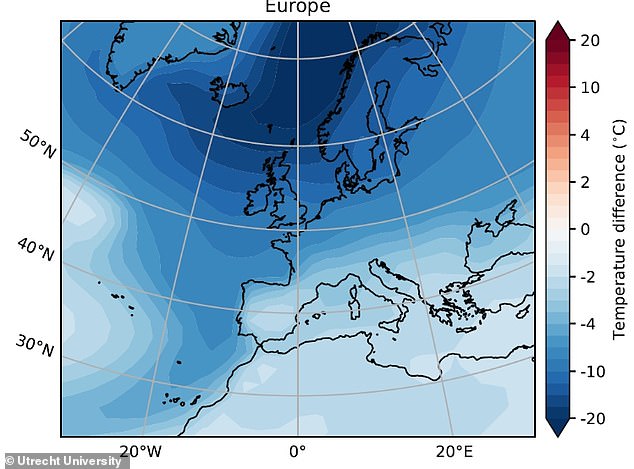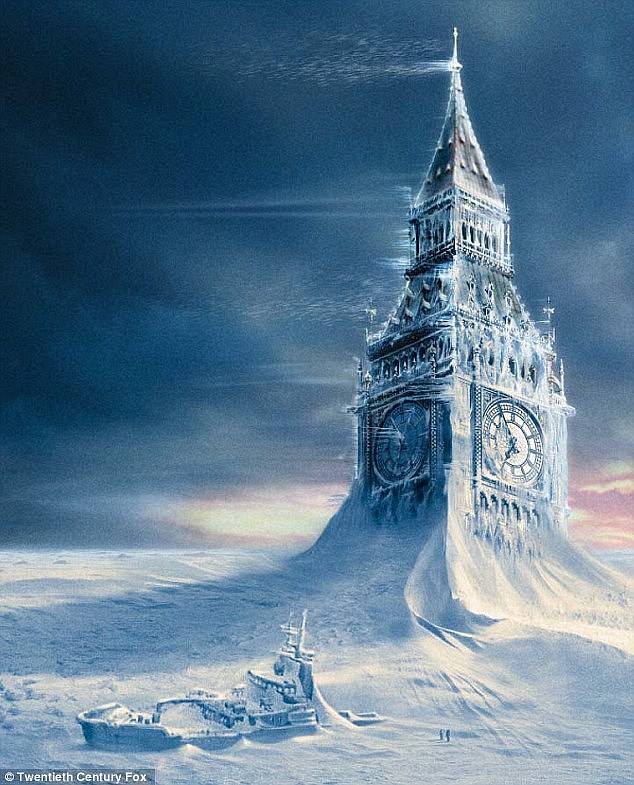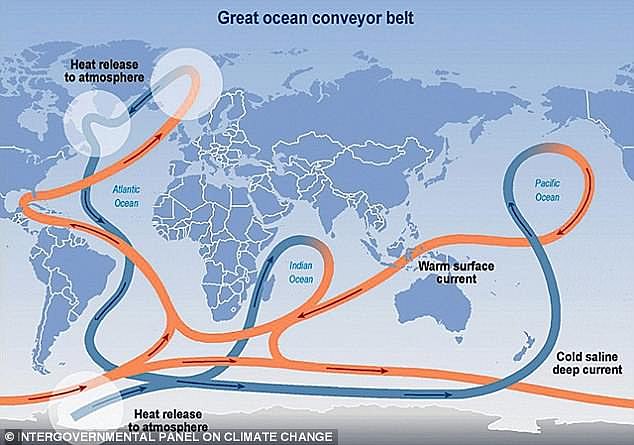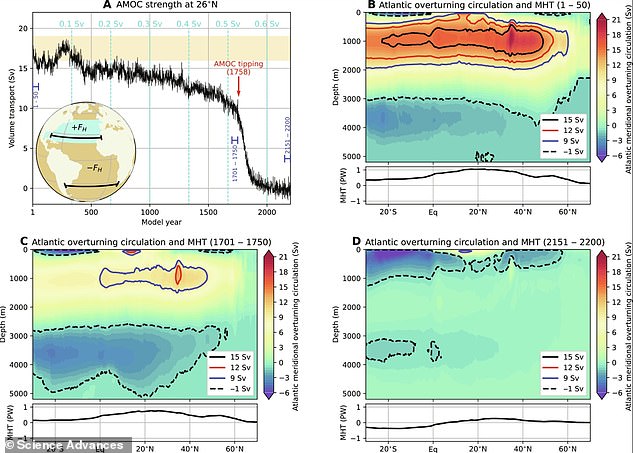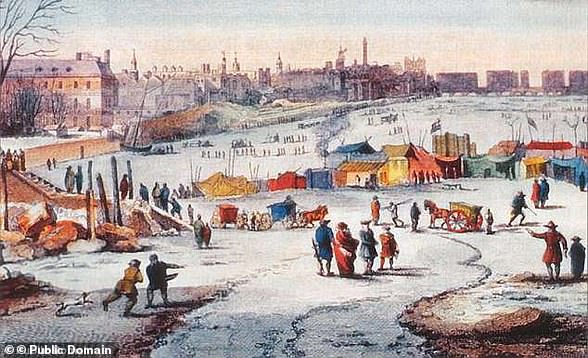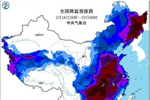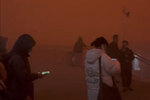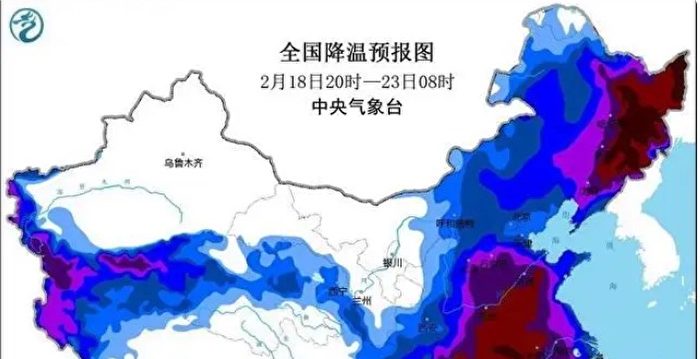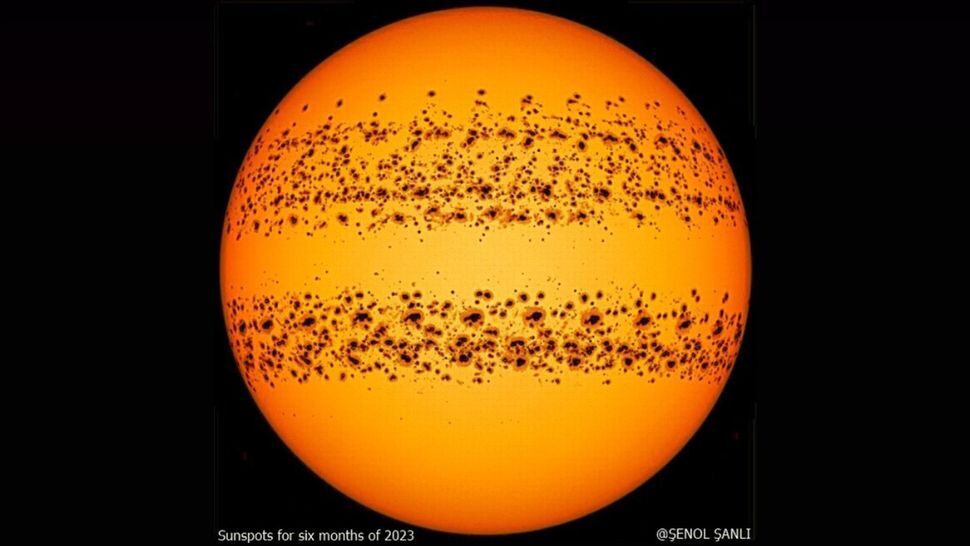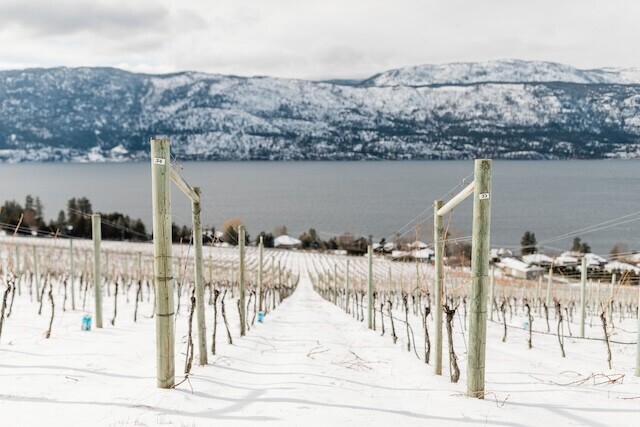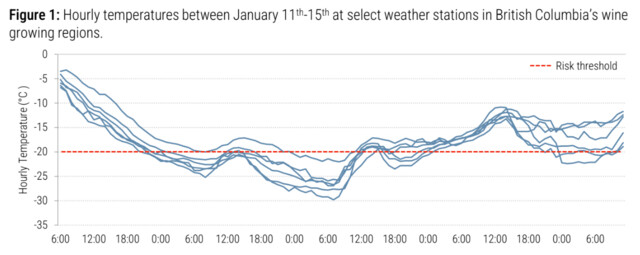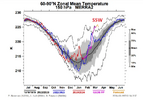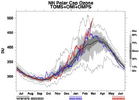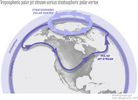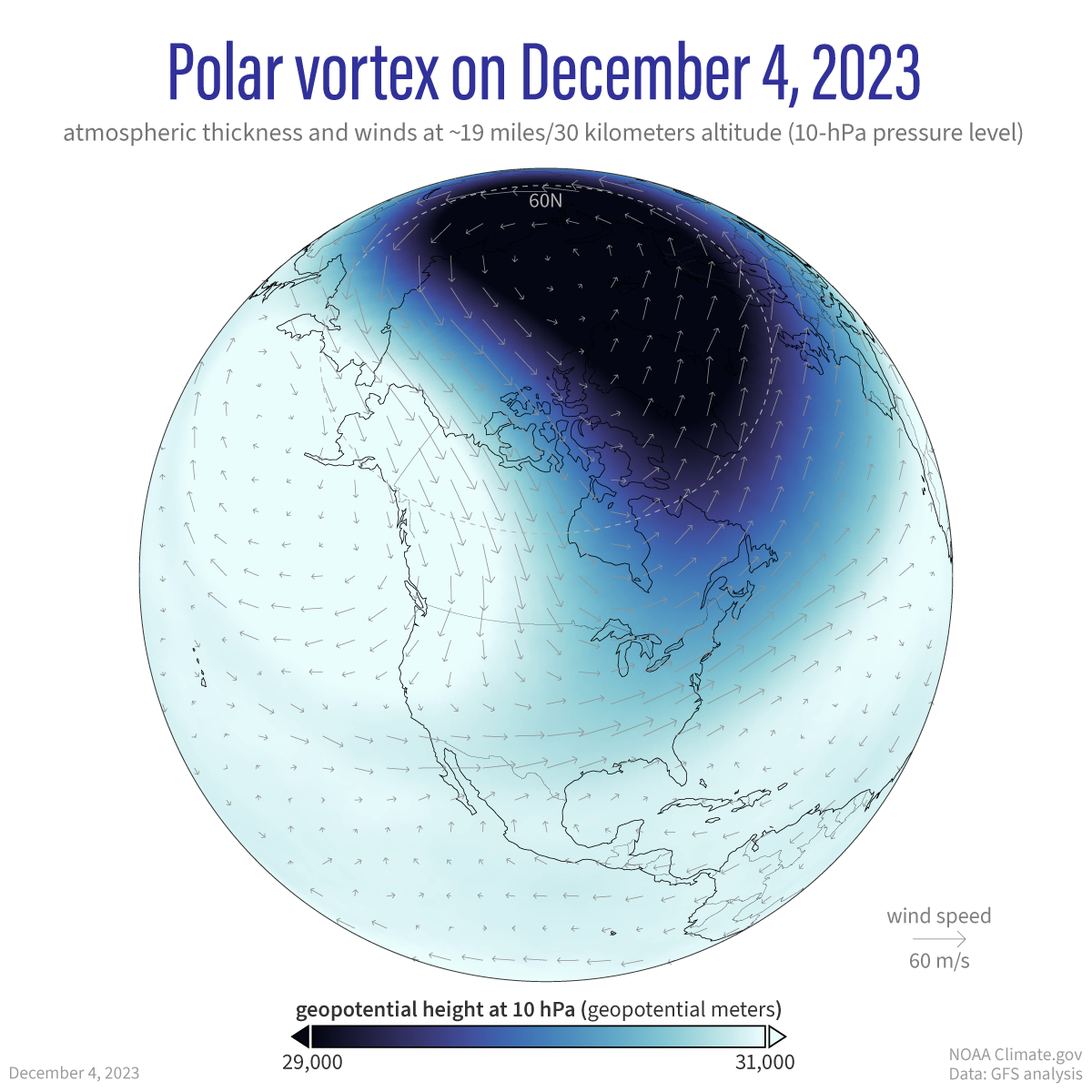12 February 2024
In the 2004 film The Day After Tomorrow, humanity is plunged into a nightmarish international storm that sends the planet into a new ice age.
And although the blockbuster was consigned to the realms of sci-fi, the science behind the frightening scenario is true.
In a matter of years,
melting glaciers could shut down the Gulf Stream - the system of currents that brings warmth to the northern hemisphere, experts say.
Without this additional heat source, average temperatures could drop by several degrees in North America, parts of
Asia and Europe, and people would see 'severe and cascading consequences around the world'.
Scientists warn that an abrupt shutdown of Atlantic Ocean currents is looking more likely than ever, as computer simulations find a 'cliff-like' tipping point looming in the near future.
In some parts of Europe, collapse of a large system of ocean currents called the AMOC could lead to a
temperature decrease of more than 5.4°F (3°C) per 10 years
In the Hollywood blockbuster The Day After Tomorrow (pictured), ocean currents around the world stop as a result of global warming, triggering a new ice age on Earth
The study authors, from Utrecht University in the Netherlands, don't know exactly when the collapse will happen, although a previous study put it as soon as next year.
'We are moving closer to the collapse, but we're not sure how much closer,' said lead author Rene van Westen, a climate scientist and oceanographer at Utrecht University.
'We are heading towards a tipping point.'
When a global weather calamity like the one in The Day After Tomorrow may happen is 'the million-dollar question', according to van Westen.
'We unfortunately can't answer [that] at the moment,' he said.
'It also depends on the rate of climate change we are inducing as humanity.'
The Gulf Stream is part of a much wider system of currents, officially called the Atlantic Meridional Overturning Circulation or AMOC.
Described as 'the conveyor belt of the ocean', it transports warm water near the ocean's surface northwards – from the tropics up to the northern hemisphere.
When the warm water reaches the North Atlantic (around Europe and the UK, and the US east coast), it releases the heat and freezes.
As this ice forms, salt is left behind in the ocean water.
Due to the large amount of salt in the water, it becomes denser, sinks , and is carried southwards in the depths below.
Eventually, the water gets pulled back up towards the surface and warms up in a process called upwelling, completing the cycle.
Scientists think AMOC brings enough warmth to the northern hemisphere that without it, large parts of Europe could enter a deep freeze.
Formally known as the Atlantic Meridional Overturning Circulation (AMOC), it powers the Gulf Stream that brings warm water from the Gulf of Mexico to the northeastern US coast
Prior studies have already shown that due to climate change, the
AMOC is slowing down.
The engine of this conveyor belt is off the coast of
Greenland, where, as more ice melts from climate change, more freshwater flows into the North Atlantic and slows everything down.
The new study forecasts that an abrupt shutdown of the AMOC could happen in the next few decades, rather than the next few centuries as previously thought.
The researchers designed a computer modelling simulation in which they were able to measure a sudden weakening of the ocean circulation.
The simulation introduced freshwater into the Atlantic Ocean, and as a result, the circulation strength gradually decreased until it reached a critical 'tipping point' and collapsed.
According to the results,
the European climate will cool by about 1.8°F (1°C) per decade, and some regions will even experience over 5.4°F (3°C) cooling per decade – much faster than today’s global warming of about 0.36 F (0.2 C) per decade.
Aside from plunging countries into a deep freeze, this would extend Arctic ice further south, turn up the heat even more in the southern hemisphere, change global rainfall patterns and disrupt the Amazon rainforest.
Other scientists say it would be a catastrophe that could cause
worldwide food and water shortages.
AMOC collapse: It would change weather worldwide because it means a shutdown of one of key the climate and ocean forces of the planet. It would
plunge northwestern European temperatures by 9 to 27 degrees (5 to 15 degrees Celsius) over the decades
'We found that once it reaches the tipping point, the conveyor belt shuts down within 100 years,' the authors said.
'The heat transport toward the north is strongly reduced, leading to abrupt climate shifts.'
The one thing they couldn't identify is when exactly this tipping point will be reached, although it is at least decades away if not longer.
'The research makes a convincing case that the AMOC is approaching a tipping point based on a robust, physically-based early warning indicator,' said Tim Lenton, chairman in climate change at University of Exeter, who was not involved with the study.
'What it cannot (and does not) say is how close the tipping point, because as it shows that there is insufficient data to make a statistically reliable estimate of that.'
The study has been published in the journal
Science Advances.
What would the world look like if the Gulf Stream collapsed?
If the AMOC was to collapse, far less heat would reach western Europe and the region would be plunged into very severe winters, the kind of scenario depicted in an extreme fashion in the movie The Day After Tomorrow.
Until the 1800s, it was relatively stable but the current declined after the so-called 'Little Ice Age' ended in 1850.
Temperatures dropped low enough that the River Thames completely froze over and records show Londoners crossing the waterway on foot.
The last shutdown was probably at the end of the last Ice Age, 12,000 years ago, and it prompted a temperature drop of 5°C to 10°C in western Europe.
In the event of another collapse, not only would European winters become much colder but
summer droughts, storms and heatwaves would likely become more common.
Sea levels could rise up to nearly 20 inches around the North Atlantic Basin, which surrounds the eastern US coast.
This would eventually push people living along the coast further inland to escape flooding. A widespread collapse of deep-sea eco-systems would occur.
In the US, Florida would be particularly badly affected as the flow of water northwards would be halted, seeing it collect on the state's shoreline.
A study
published last year looked at how the cessation of the AMOC may impact the UK specifically.
The Little Ice Age, a centuries-long cold period that lasted until about 1850. Experts believe that as the North Atlantic began to warm near the end of the Little Ice Age, freshwater disrupted the system. Pictured is Thames Frost Fair, 1683–84, by Thomas Wyke
University of Exeter researchers made a computer model and found that by 2080 the weather would be 3.4°C colder than it was last year.
Rainfall during the growing season is expected to drop by 123mm, they added.
This,
Ars Technica reports, is enough to reduce the UK's arable land from 32 percent to just seven percent, greatly affecting food production.
The effects would be felt not in Europe and the United States, with forecasts also projecting that the collapse of the AMOC would also increase drought in the Sahel in Africa.
